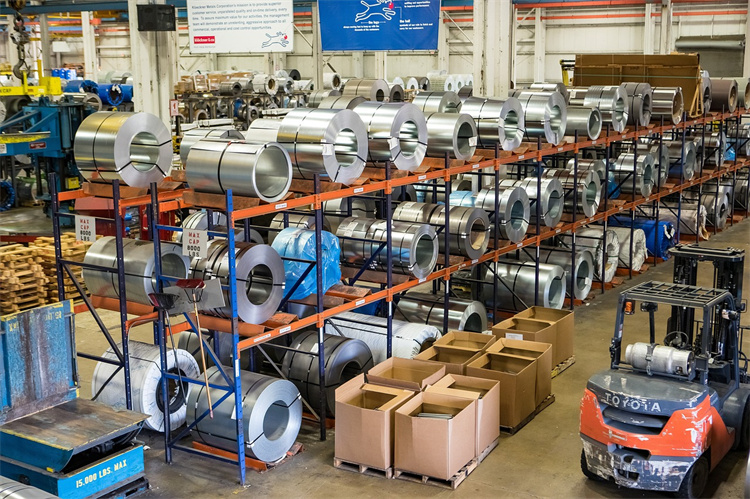Exploring Sustainability: Robotics Technology Trends in Supply Chain Management

In the realm of supply chain management, sustainability plays a pivotal role in fostering long-term success. Robotics technology emerges as a powerful ally in this pursuit, offering innovative solutions to enhance operational efficiency and environmental stewardship. Today, we delve into the dynamic landscape of Overview of Robotics Technology Trends in Supply Chain Management, exploring key advancements shaping the industry's future.
Overview of Robotics Technology Trends in Supply Chain Management
In the realm of supply chain management, the Growth of Robotics in Supply Chain is a burgeoning trend reshaping operational landscapes. The market size and projections for robotics in supply chain operations are witnessing remarkable growth, with significant implications for the industry's future.
The global market for robotics in supply chain is projected to reach $117.89 billion by 2027 with a compound annual growth rate of 23.6%.
Specifically, the warehouse robotics market is expected to soar to US$ 15.4 Billion by 2032, exhibiting a notable growth rate (CAGR) of 10.13% during 2024-2032.
Notably, the logistics robotics market is experiencing substantial expansion driven primarily by the transportation segment.
The adoption of robotics in supply chain management is fueled by a quest for enhanced efficiency and productivity. As industries seek to optimize their operations, robotics emerges as a pivotal solution offering streamlined processes and sustainable practices.
Moving forward, understanding the benefits of robotics in supply chain management becomes imperative. Robotics technology not only enhances operational efficiency but also has a profound environmental impact, paving the way for sustainable practices within the industry.
Warehouse logistics stands out as an industry with high adoption rates and promising benefits from robotic integration.
Automated robots and specialized software are revolutionizing warehouse processes, streamlining operations, and enhancing overall efficiency.
Embracing robotics technology trends in supply chain management signifies a shift towards innovation and sustainability. As warehouses evolve into smart facilities powered by automation, the future holds exciting prospects for efficient and eco-conscious supply chain practices.
Specific Robotics Technologies in Supply Chain

Assisted-Picking Robots
In the realm of supply chain management, Assisted-Picking Robots have emerged as a transformative technology revolutionizing warehouse operations. These robots are designed to streamline the item collection process, enhancing efficiency and accuracy in inventory management.
The Applications and Benefits of assisted-picking robots span across various industries, from e-commerce fulfillment centers to manufacturing facilities. By automating the picking process, these robots significantly reduce human error and increase order fulfillment speed.
Notably, case studies have showcased the remarkable impact of assisted-picking robots on operational workflows. Companies integrating this technology have reported up to a 30% increase in productivity and a substantial decrease in picking errors.
Robotic Process Automation (RPA)
Robotic Process Automation (RPA) is reshaping retail industries by providing advanced solutions for operational challenges. This technology leverages robotic software agents to automate repetitive tasks, enabling retailers to optimize their processes and gain valuable insights into consumer behavior.
Within retail settings, RPA finds diverse Applications, from inventory management to customer service interactions. By automating routine tasks like data entry and order processing, RPA allows retailers to focus on strategic initiatives that drive growth.
Through RPA implementation, retailers can unlock valuable Consumer Behavior Insights by analyzing vast amounts of data in real-time. This enables them to tailor marketing strategies, improve customer experiences, and enhance overall business performance.
Collaborative Robots (Cobots)
Collaborative Robots (Cobots) are revolutionizing supply chain operations by working alongside human employees to enhance efficiency and safety standards. These robots are specifically designed to collaborate with human workers in shared workspaces, offering a flexible and adaptive approach to automation.
By Enhancing Efficiency, cobots streamline repetitive tasks while allowing human workers to focus on more complex responsibilities. This symbiotic relationship between humans and cobots optimizes productivity levels within warehouses and distribution centers.
The paramount concern for supply chain managers is ensuring workplace safety without compromising productivity levels. Cobots address this challenge by prioritizing Safety through advanced sensors that detect human presence and adjust their movements accordingly, ensuring a secure working environment for all employees.
Future Trends and Developments

Autonomous Robots
Growth Projections
The growth projections for autonomous robots in supply chain operations are nothing short of remarkable. By 2025, the global market for autonomous robots is anticipated to exceed $20 billion, showcasing a substantial increase from previous years.
Industry experts predict a compound annual growth rate (CAGR) of over 15% in the adoption of autonomous robots across various sectors, including logistics and warehousing.
The integration of artificial intelligence and machine learning algorithms into autonomous robots is set to drive this exponential growth, enabling them to perform complex tasks with precision and efficiency.
Potential Applications
Autonomous robots hold immense potential in transforming last-mile delivery services by enhancing speed and accuracy while reducing operational costs.
In warehouse management, these robots can optimize inventory tracking, automate order fulfillment processes, and minimize human intervention in repetitive tasks.
The agricultural sector is also poised to benefit from autonomous robots through precision farming techniques that improve crop yield and reduce resource wastage.
Humanoid Robots
Emerging Trends
Recent advancements in robotics technology have paved the way for the emergence of humanoid robots designed to mimic human-like movements and interactions.
The trend towards humanoid robots is fueled by the desire to create more engaging customer experiences in retail settings and personalized services in healthcare environments.
Educational institutions are exploring the use of humanoid robots as teaching assistants to enhance student engagement and facilitate interactive learning experiences.
Industry Impact
The introduction of humanoid robots is expected to revolutionize industries such as personal assistance, entertainment, and education by offering innovative solutions that bridge the gap between humans and machines.
Retail establishments deploying humanoid robots for customer service interactions witness improved customer satisfaction levels and increased brand loyalty.
In the field of healthcare, humanoid robots assist medical professionals in patient care tasks, ensuring efficient service delivery while maintaining high standards of quality care.
By embracing these future trends in robotics technology, supply chain managers can unlock new opportunities for operational excellence and sustainable practices within their organizations. As autonomous and humanoid robots continue to evolve, their transformative impact on supply chain management will shape a more efficient, productive, and environmentally conscious industry landscape for years to come.
The adoption of Autonomous Mobile Robots (AMRs) and other robotic technologies offers companies the opportunity to reduce costs, increase productivity, and enhance operational efficiency while ensuring safe and timely deliveries.
By leveraging the capabilities of robotics, warehouses can optimize operations, reduce energy consumption, minimize waste, enhance workplace safety, and improve overall efficiency.
The role of robotics in supply chain management is set to grow, revolutionizing the way companies operate in the global marketplace. Robotics will play a pivotal role in shaping the sustainable future of warehousing and logistics.
See Also
Exploring Tomorrow's Supply Chain: AI Fusion Perspectives
Transforming Transportation: Supply Chain Innovation Effects
Efficiency Enhancements for Advanced Manufacturing's Supply Chain Challenges
Innovative Advances in Logistics: A Glimpse into Tomorrow
Constant Readiness: JUSDA's Risk Mitigation for Strong Supply Chains
